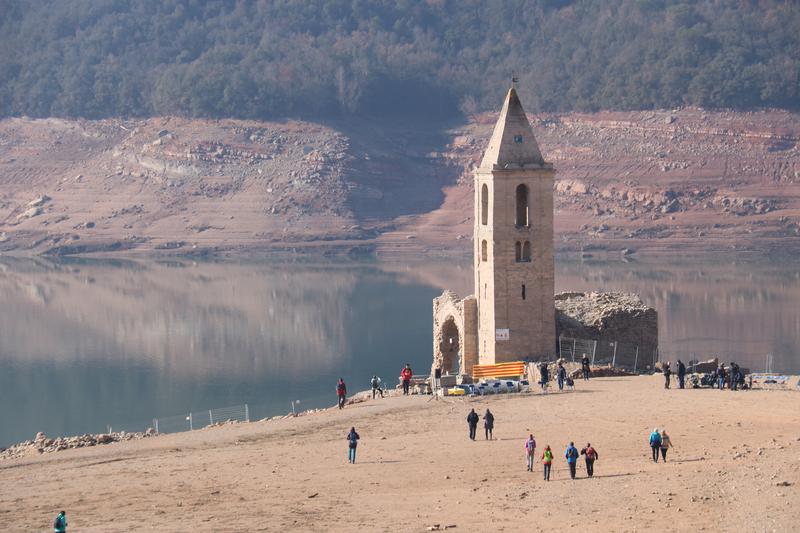Catalonia could declare water emergency in September if current use and rain trends continue
Lowering average daily consumption by 5 liters since January not enough, authorities say

The relentless 30-month drought continues to wreak havoc on water supplies in Catalonia, with authorities warning that the vast majority of the territory could possibly enter a state of water emergency in September.
"Unfortunately, if it doesn't rain and if consumption rates continue, the country will enter a state of emergency in September despite all the efficiency and savings measures that the government is implementing," government spokesperson Patrícia Plaja said on Tuesday following the weekly cabinet meeting.
Accompanied by the head of the Catalan Water Agency (ACA), Samuel Reyes, she explained that residents near the Ter and Llobregat rivers, which provide water to around two thirds of the population, had actually lowered their average daily use of water by 5 liters to 180 liters per person per day, but said that this was not enough as reservoirs are only at 26% capacity. If Catalonia were to enter a water emergency, consumption would be limited to 200 liters per person per day or even lower if necessary.
Although this is the third month in a row in which average water consumption has dropped, the current rate at which it is decreasing is not fast enough to prevent reservoir capacity from dipping below the 25% at which an emergency is declared, and consumption also tends to go up in the summer months with rising temperatures.
Precipitation in May will be key to preventing a water emergency in September, Plaja explained, adding, however, that "short- to medium-term weather forecasts do not indicate a change in the trend."
April has already proven to be warmer than average, a situation that exacerbates the risk of dangerous wildfires, and some river flow rates have dropped significantly.
"The flow rate of the Ter river near Ripoll and the flow rate of the Llobergat river near Guardiola de Berguedà are at a historic low since 1900," Reyes said.
Sau reservoir fish cull
The authorities stated that the cull of invasive fish species in the Sau reservoir in central Catalonia that had been carried out to preserve the quality of the water had come to an end.
Some of this water has already been transferred to the nearby Susqueda reservoir and the ACA will continue to assess the situation to determine whether this will be required again in the near future.
Briefing sessions and practical guides
The ACA will begin holding meetings with representatives of different sectors to inform them of best practices given the ongoing drought.
The agency will meet with the tourism sector on Wednesday and has plans to meet with economic and industrial actors in the near future before meeting with the sports sector in May and it will also be creating practical water management guides for local authorities.
Additional measures
As was already announced a few weeks ago, community and municipal pools will avoid drought restrictions as they are "key climate refuges" over the unseasonably warm summer months.
Reyes said that the ACA would move forward with processing the change to legislation - which states pools cannot be filled when there is a drought - this week and expects it to be approved in May.
The head of the Catalan Water Agency also explained that the ACA would modify regulations regarding last-minute hiring as it envisions emergency water supply system works being necessary due to the drought.